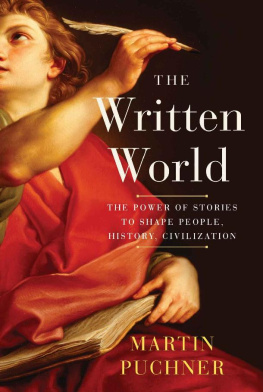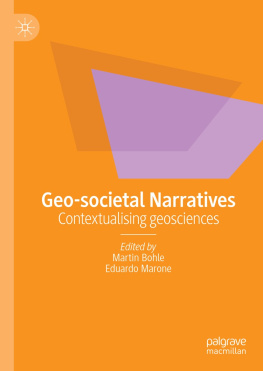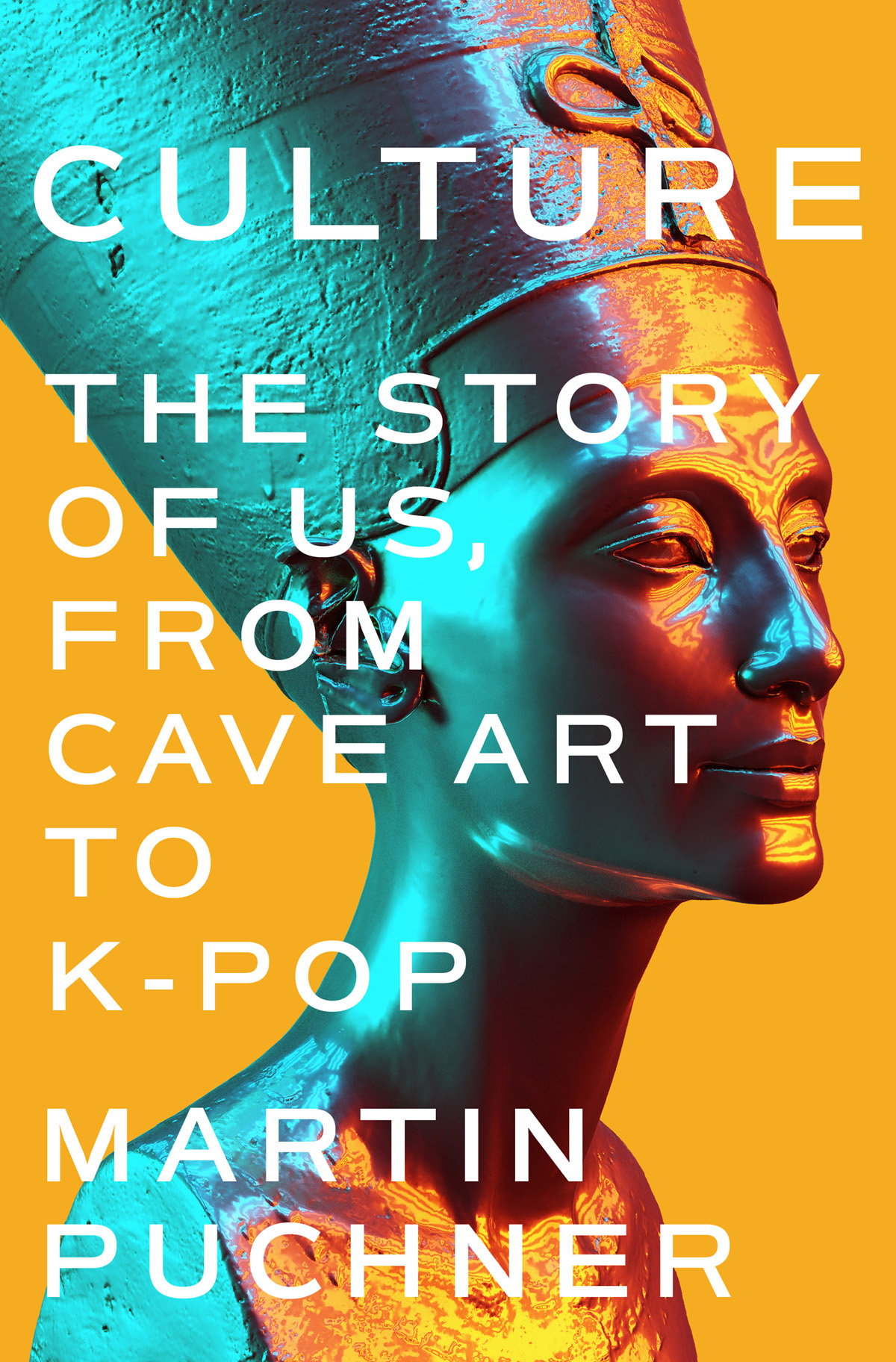Contents
Guide
Page List
CULTURE

THE STORY OF US, FROM CAVE ART TO K-POP
Martin Puchner

For the one to be loved
CONTENTS


H eres one view of culture: the earth is populated by groups of humans, and these groups are held together by shared practices. Each of these cultures, with their distinct customs and arts, belongs to the people born into it, and each must be defended against outside interference. This view assumes that culture is a form of property, that culture belongs to the people who live it. One advantage of this view is that it encourages people to cherish their own heritage; it also gives them resources for defending it, as when museums are pressured to return objects acquired under dubious circumstances to their rightful owners. The assumption that culture can be owned has a surprisingly broad coalition of advocates, including nativists invested in their national traditions and those hoping to stop cultural appropriation by declaring one groups cultural property off-limits to outsiders.
There is a second view of culture that rejects the idea that culture can be owned. This view is exemplified by Xuanzang, the Chinese traveler who went to India and brought back Buddhist manuscripts. It was embraced by Arab and Persian scholars who translated Greek philosophy. It was practiced by countless scribes, teachers, and artists who found inspiration far outside their local culture. In our own time, it has been endorsed by Wole Soyinka and many other artists working in the aftermath of European colonialism.
Culture, for these figures, is made not only from the resources of one community but also from encounters with other cultures. It is forged not only from the lived experience of individuals but also from borrowed forms and ideas that help individuals understand and articulate their experience in new ways. When seen through the lens of culture as property, these figures might appear to be intruders, appropriators, even thieves. But they pursued their work with humility and dedication because they intuited that culture evolves through circulation; they knew that false ideas of property and ownership impose limits and constraints, leading to impoverished forms of expression.
This book is not a celebration of the great books, nor a defense of the Western canon. The view of culture that emerges here is messier, and I think more interesting: one of far-flung influences, brought together through contact; of innovation driven by broken traditions patched together from recovered shards. The figures who promoted this view were often unrecognized, and some remain unknown beyond a handful of specialists even today. Many were unfamiliar to me before I began to look beyond established canons and let the protagonists of this book lead me down less trodden paths and hidden byways. What I learned from them is that if we want to restrict exploitative tourism, avoid disrespectful uses of other cultures, and protect embattled traditions, we need to find a different language than that of property and ownership, one more in keeping with how culture actually works.
From the handiwork of these creators a new story of culture emerges, one of engagement across barriers of time and place, of surprising connections and subterranean influences. Its not always a pretty story, and shouldnt be presented as such, but its the only one weve got: the history of humans as a culture-producing species. Its the story of us.

L ong before humans appeared on earth, the Chauvet cave, in the south of France, was filled with water. Over time, the water cut deep gorges into the brittle limestone and then drained away, leaving a system of hollows perched high above the Ardche River that began to attract visitors. For thousands of years, families of bears retreated into its deep chambers to hibernate. When the bears were gone, a wolf came and left; once, an ibex walked deep into the dark interior, jumped, and landed hard, sliding into a narrow grotto. Finding itself at a dead end, it panicked, quickly retraced its steps until it had freed itself again, turned around, and finally came to a complete stop.
When the bears, the wolf, and the ibex had abandoned the cave for good, humans dared to enter it for the first time. The flickering light of the torches also revealed marks left by the caves previous inhabitants. As hunters and gatherers, the torchbearers were expert readers of tracks. The eight-hundred-pound bodies of grown bears had made hollows where they slept, and their sharp claws had scratched the walls. The wolf had also left tracks, and the misadventures of the ibex were recorded step by startled step on the soft clay floor.
The humans didnt just read the animal markings; they added to them, beginning a long process of turning the cave into a new environment. They drew the outlines of bears, wolves, and ibexes as if to honor the previous inhabitants of the cave, but they also conjured up other animalspanthers and lions, mammoths and aurochs, reindeer and rhinoceroseseither alone or gathered in herds fleeing from hungry predators at their heels.
In addition to the engravings, humans used the coal from their spent fires to draw more elaborate figures and scenes, sometimes filling in the outlines with mixtures of clay and ash. The walls of the caves were not flat, and the artists incorporated their unevenness, surprising viewers with a herd of horses that suddenly appeared galloping around a corner. Some artists became better in the course of a single composition, capturing the muzzle of a lion or the mane of a horse with increasing precision. They placed these drawings at strategic locations around the cave, often high up on the walls, for maximum effect on torch-bearing humans, to whom the paintings would be disclosed one by one as they moved through these dimly lit spaces.
Unlike the bears, humans never lived in the caves (none of the fire pits have animal bones or other signs of cooking); their fires were used only to illuminate these spaces and to produce the charcoal with which they were decorated. They began this work over 37,000 years ago and continued it for thousands of years, guided by a shared sense of how a particular animala rhinoceros, an ibex, a mammothshould be drawn.
Then, 34,000 years ago, part of the mountainside came crashing down and sealed the entrance. For the artists, none of whom were in the cave at the time, it was a catastrophe that shut them off from their multigenerational work. For us, it is a piece of luck because it preserved the cave from future generations of animals and humans who would have altered or destroyed it through continual use.
The Chauvet cave shows the central dynamic of culture at work. Originally, humans may have been inspired by random bear marks to undertake their work on the cave, but over time they turned these markings into deliberate artistry that was passed down through the generations with remarkable continuity. This is the fundamental difference between bears and humans: bears (and the other animals in the cave) developed through the process of natural evolution first outlined by Charles Darwin, a process so slow that it is measured in hundreds of thousands, even millions of years.










